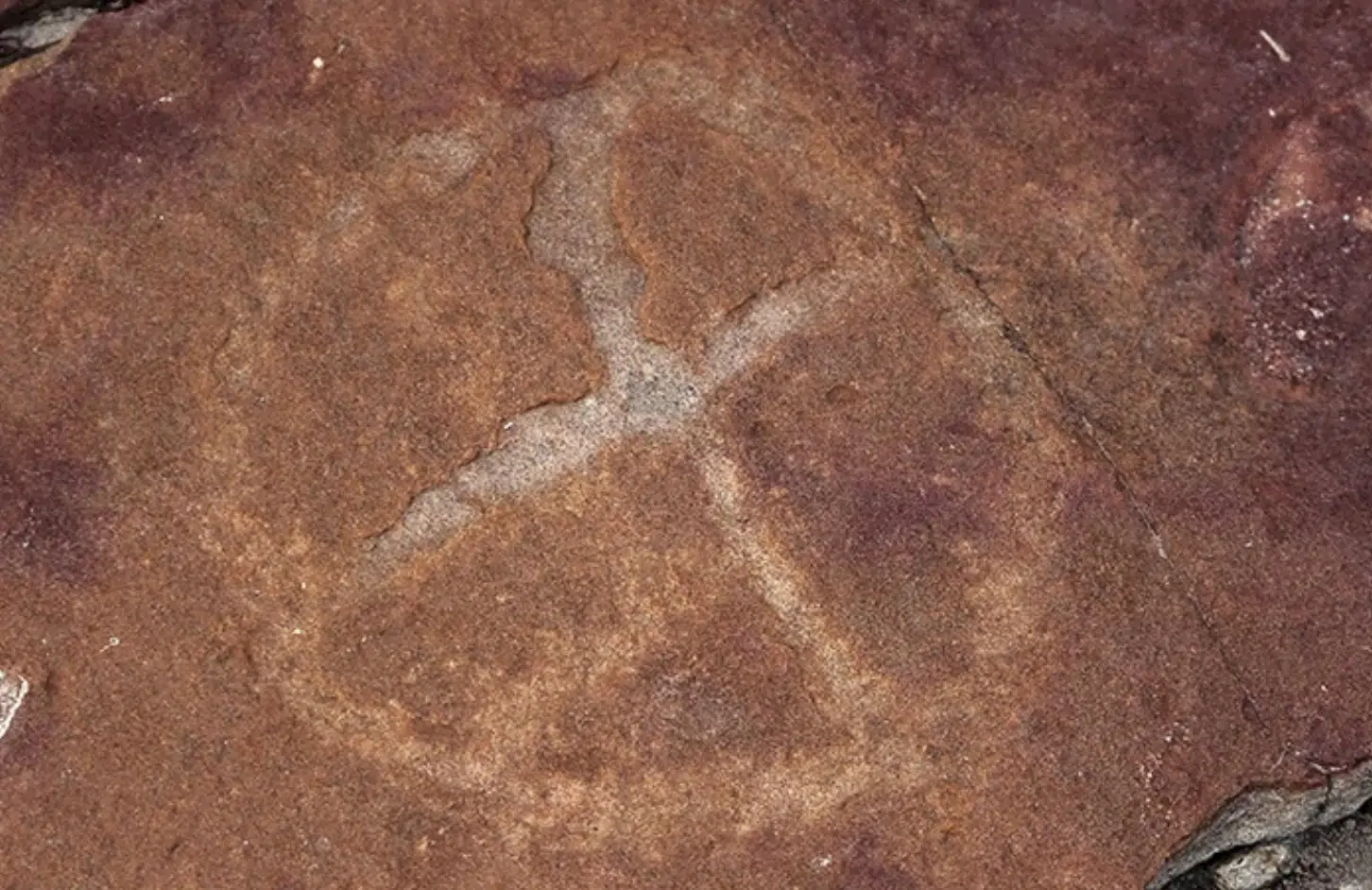
A recent study reveals that, about 9,400 years ago, hunter-gatherers living in what is now Brazil made rock art near dinosaur footprints. These drawings were discovered close to the fossilized footprints of dinosaurs from the Cretaceous period, which was around 145 to 66 million years ago.
Published on March 19th in Scientific Reports, the study by researchers detailed these rock drawings and dinosaur tracks. They believe ancient humans intentionally placed the rock art next to the dinosaur footprints.
Many of these drawings are only two to four inches away from the fossilized marks. Additionally, some of the drawings seem to depict the footprints themselves, as reported by Live Science.
Hunter-gatherers might know about dinosaur footprints
Leonardo Troiano, an archaeologist from Brazil’s National Institute of Historic and Artistic Heritage and the lead author of the study, explained to Live Science that the people who made the rock drawings were very aware of the dinosaur footprints.
They probably chose the spot specifically because of these footprints. Troiano emphasized it would have been hard to miss such prominent marks.
The archaeological site, called Serrote do Letreiro (meaning “Signpost Hill” in Portuguese), sits approximately seven miles (eleven kilometers) away from the main area of Sousa municipality in the northeastern state of Paraíba.
This location is near the Valley of the Dinosaurs, a protected area famous for its numerous fossilized dinosaur footprints, as reported by Live Science.
Researchers know about dinosaur footprints since 20th century
Based on the new study, researchers have been aware of the fossilized dinosaur footprints in the region since the early twentieth century. However, the rock art in the area has received only brief mentions over time.
Although there was previous knowledge of at least one ancient engraving made by the Kiriri, the primary Indigenous group in the northeast region of Brazil, the close connection between the petroglyphs and dinosaur footprints had never officially been recorded, Troiano explained.
Troiano and his team conducted the study with a group of middle-school students who visited the site in 2023. Besides studying paleontology and archaeology, the students helped take photographs during the fieldwork.
The researchers observed that the footprints belonged to various types of dinosaurs, such as meat-eating theropods, long-necked sauropods, and two-legged ornithopods, as well as iguanodontian dinosaurs.
The authors of the study proposed that the similarity between the footprints and those of the emu-like rhea (Rhea americana), the largest bird in Brazil, might have helped ancient people recognize and understand these fossil remains more easily.
The petroglyphs mainly consist of carvings depicting circles filled with lines and other geometric patterns. The artwork is believed to have been created by people who lived in the area between 9,400 and 2,620 years ago.
See all the latest news from Greece and the world at Greekreporter.com. Contact our newsroom to report an update or send your story, photos and videos. Follow GR on Google News and subscribe here to our daily email!



